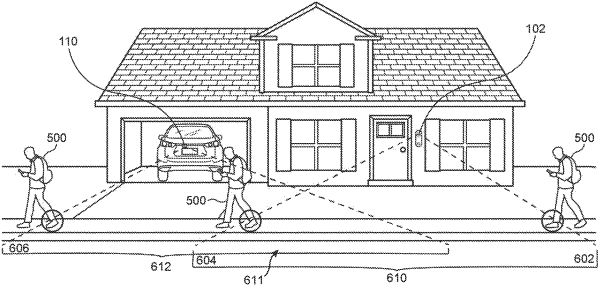| CPC H04N 5/268 (2013.01) [G06V 20/56 (2022.01); H04N 7/188 (2013.01); H04N 23/61 (2023.01); H04N 23/90 (2023.01)] | 20 Claims |

|
1. A method for using a vehicle camera to capture visual information for a home security system, the method comprising:
detecting a trigger event to activate at least one home security camera of a home security system of a dwelling;
analyzing activity of a target person near the dwelling using the at least one home security camera;
based on the analyzed activity, determining whether a vehicle is in place at or near the dwelling by detecting a connection between the vehicle and a local area network of the dwelling;
in response to determining that the vehicle is in place at or near the dwelling, activating at least one camera of the vehicle located at or near the dwelling;
capturing visual information associated with the target person using the at least one camera of the vehicle; the method further comprising:
determining a field of view of the at least one home security camera;
determining a field of view of the at least one camera of the vehicle;
determining an overlap area wherein a portion of the field of view of the at least one home security camera overlaps with a portion of the field of view of the at least one camera of the vehicle;
simultaneously capturing visual information associated with the target person within the overlap area using both the at least one home security camera and the at least one camera of the vehicle for a predetermined period of time; and
upon expiration of the predetermined period of time, automatically switching to only the visual information captured by the at least one camera of the vehicle.
|